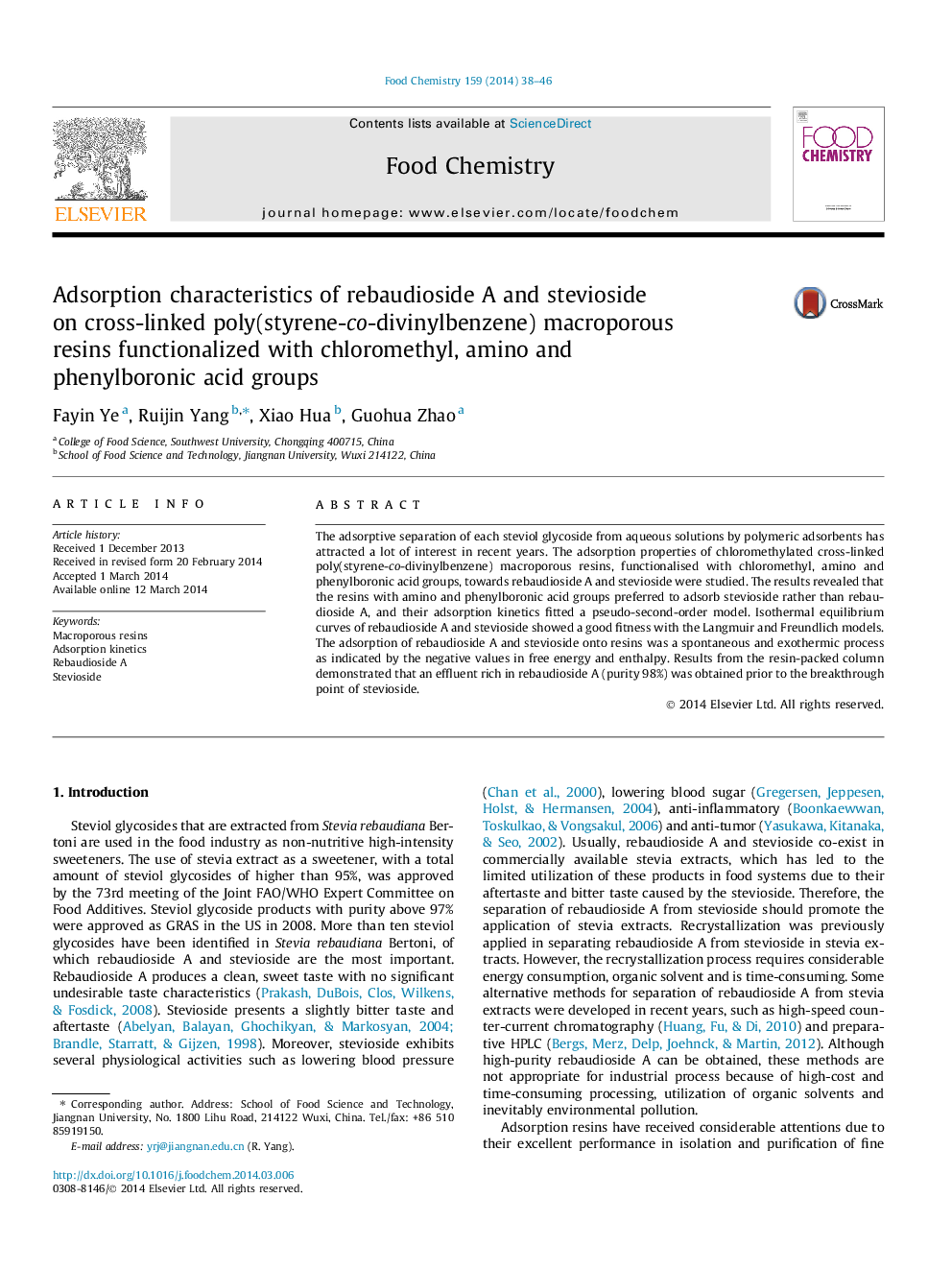| Article ID | Journal | Published Year | Pages | File Type |
|---|---|---|---|---|
| 7597145 | Food Chemistry | 2014 | 9 Pages |
Abstract
The adsorptive separation of each steviol glycoside from aqueous solutions by polymeric adsorbents has attracted a lot of interest in recent years. The adsorption properties of chloromethylated cross-linked poly(styrene-co-divinylbenzene) macroporous resins, functionalised with chloromethyl, amino and phenylboronic acid groups, towards rebaudioside A and stevioside were studied. The results revealed that the resins with amino and phenylboronic acid groups preferred to adsorb stevioside rather than rebaudioside A, and their adsorption kinetics fitted a pseudo-second-order model. Isothermal equilibrium curves of rebaudioside A and stevioside showed a good fitness with the Langmuir and Freundlich models. The adsorption of rebaudioside A and stevioside onto resins was a spontaneous and exothermic process as indicated by the negative values in free energy and enthalpy. Results from the resin-packed column demonstrated that an effluent rich in rebaudioside A (purity 98%) was obtained prior to the breakthrough point of stevioside.
Related Topics
Physical Sciences and Engineering
Chemistry
Analytical Chemistry
Authors
Fayin Ye, Ruijin Yang, Xiao Hua, Guohua Zhao,
